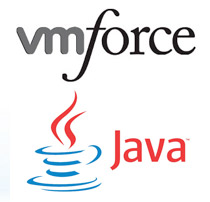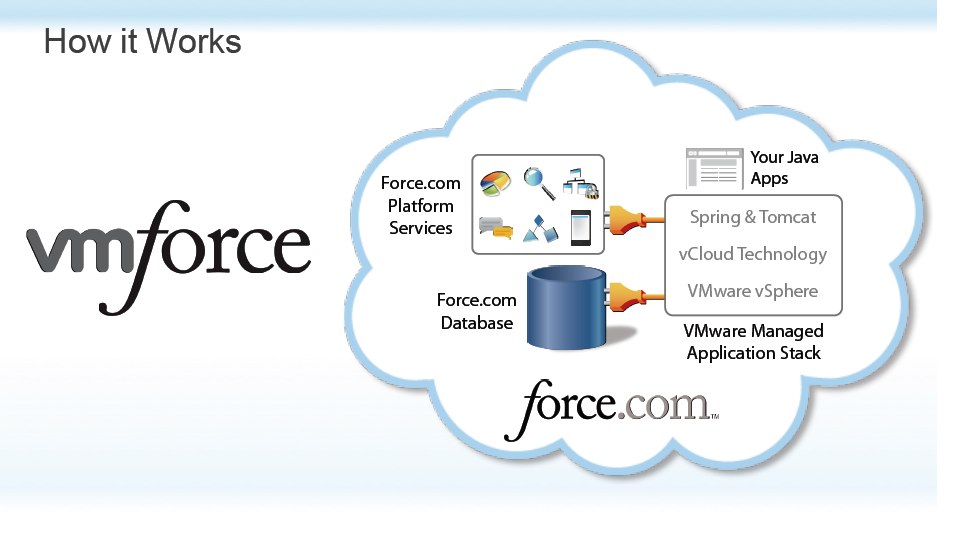 Last weekend, Oracle announced it’s latest offering that enables Virtualization-Aware Java Applications on top of Weblogic webserver.
Last weekend, Oracle announced it’s latest offering that enables Virtualization-Aware Java Applications on top of Weblogic webserver.
Taking it further, is Salesforce and VMware, who are turning cloud computing into a Java runtime environment. The companies have partnered to together enable Spring framework based Java cloud. The foundation would be VMware’s vSphere virtualization infrastructure and will be hosted, of course, at Salesforce.com.
VMforce (the name is obvious) will be able to host any Java application that can be built to utilize existing Salesforce’s database infrastructure. So what this means is that Enterprises and Businesses can build and host their Java applications on the salesforce’s infrastructure just like its possible today with Google’s App Engine. But way more capable.
App Engine limits (and restricts) itself to POJO java applications with limited choice of database: BigTable, a non-relational database (non-RDBMS). However, VMforce will host and run a typical J2ee application on most popular J2ee framework i.e. Spring (using Spring application-hosting layer) and a full blown traditional RDBMS database.
No doubt, Java developers currently lack a simple path to cloud deployment.
“There are over 6 million developers who know Java. It has transformed this industry and brought enterprises onto the Internet. But enterprise Java developers don’t have a clear path into the cloud. Can they deliver these next-generation cloud applications? Is there a gap between where Java is and where cloud computing is going?”
Paul Maritz, CEO of VMware, said that “developers value, above everything else, productivity.” He said that, for new applications, deployment to a cloud can increase productivity and reduce internal IT complexity. He said that these benefits are at the heart of the partnership between VMware and Salesforce.
The companies together believe that this gap must be filled, so that we can deploy Real business Java apps to the cloud, giving developer more power to deliver the next generation of application development and deployment.
VMforce should open up to the public this fall. With vSphere being mature enough for most Cloud apps, it would help in evolution and maturing of Cloud-based Java application.
How it Works:
On top of vSphere, the VMforce cloud will offer a Spring application-hosting layer and a database. Developers will use the SpringSource Tool Suite to build and deploy applications built specifically for the VMforce cloud. Those tools will include automatic analysis tools that can call out the portions of an application that will need to be changed to work in a cloud environment.
The app deployment and maintenance will be done via “The SpringSource Tool Suite” ,a free development environment. To create a new application, there are a number of wizards but nothing new that needs to be learned. New applications can also be created using Spring template wizards.
However, the bad part: Applications using Enterprise JavaBeans aren’t candidates for moving to VMforce, and other Java EE applications would require significant rework in order to run in that environment. The VMforce platform is targeted at developers creating new Java applications for the cloud. This could be a big limitation of this Cloud service.
For Latest Tech updates in Open Source, Programming, Java, Tech News find us on Twitter @taranfx or subscribe below:
loading...
loading...

